Strip Quilt
Idabell Bester
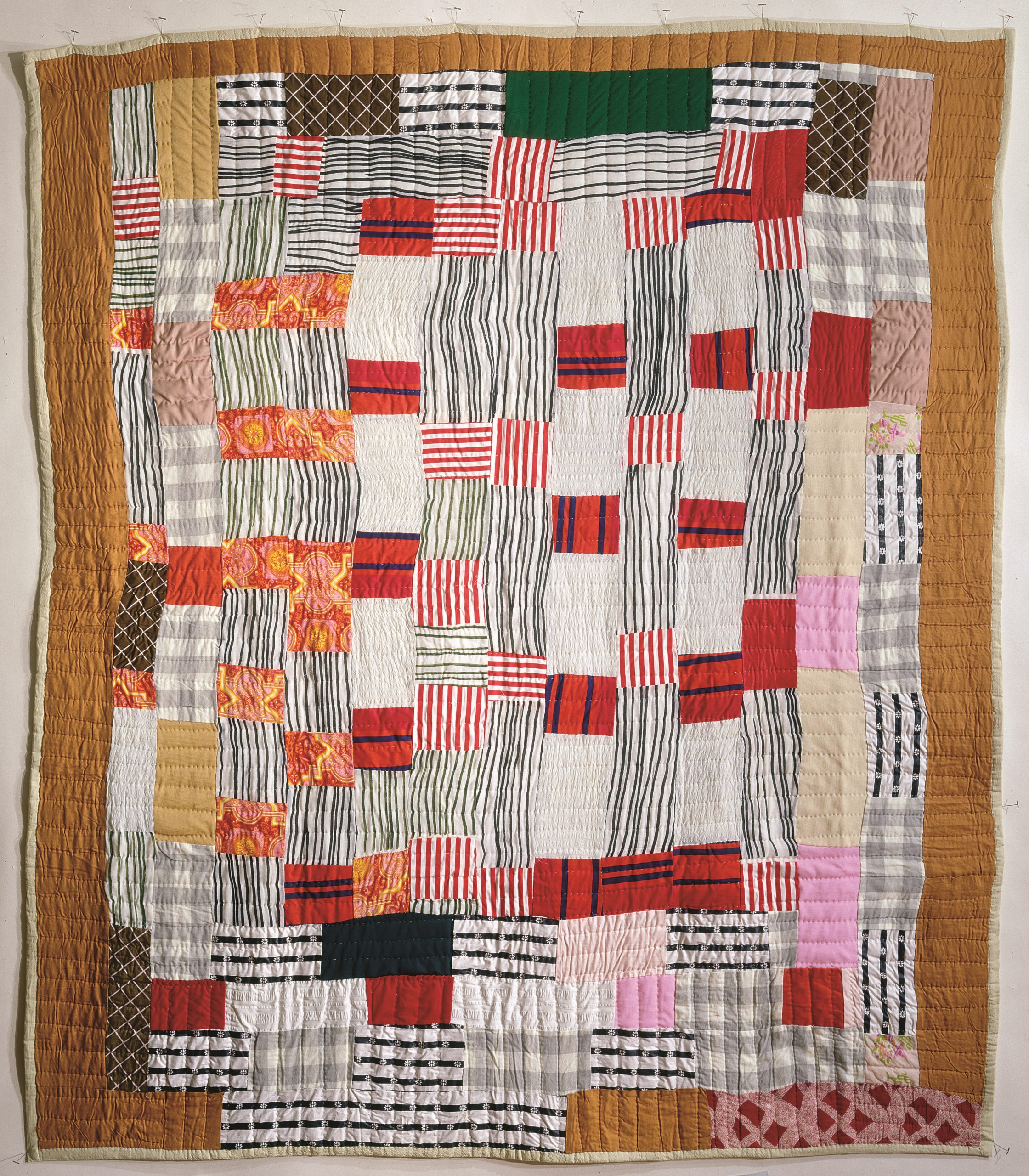
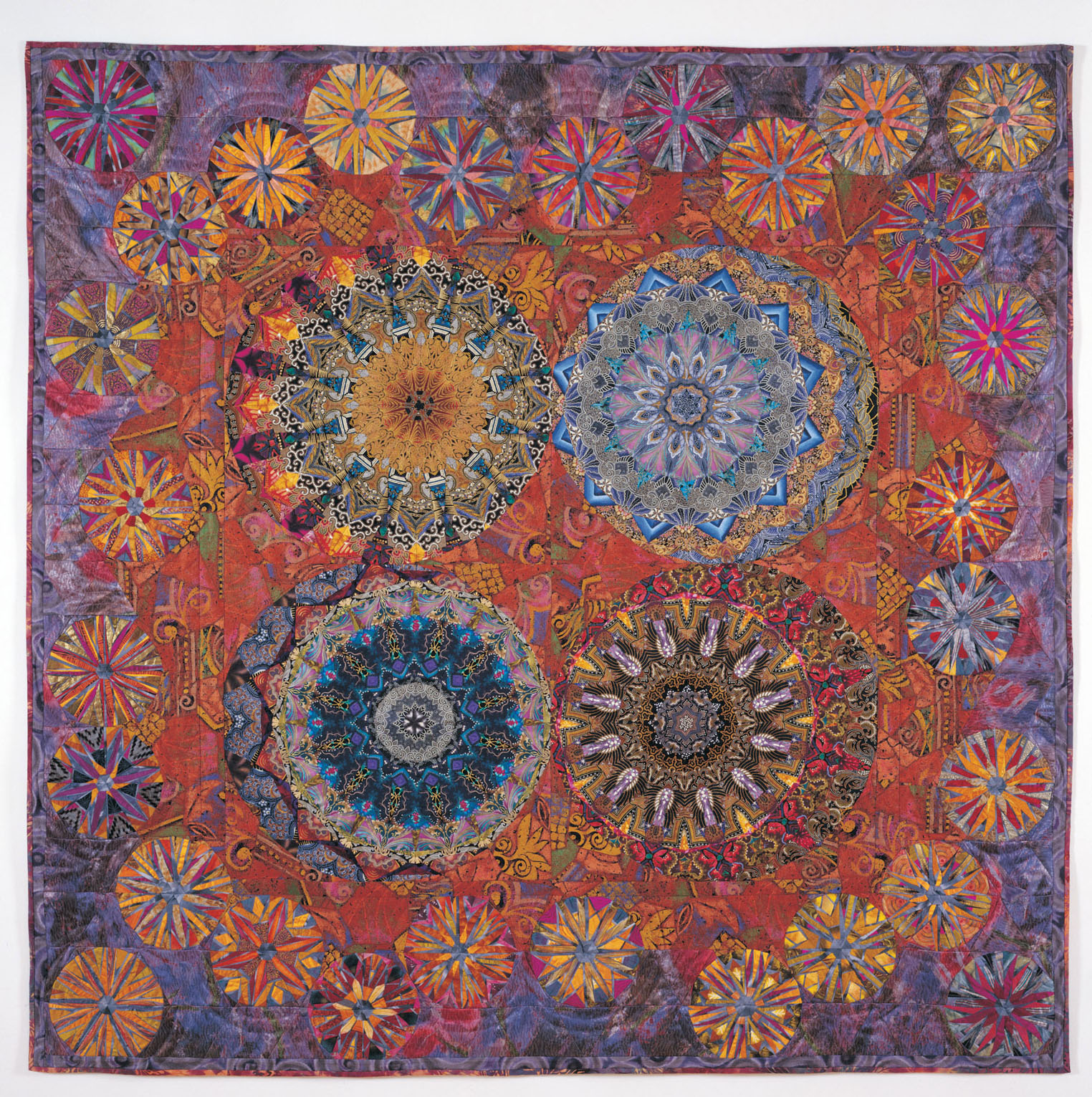
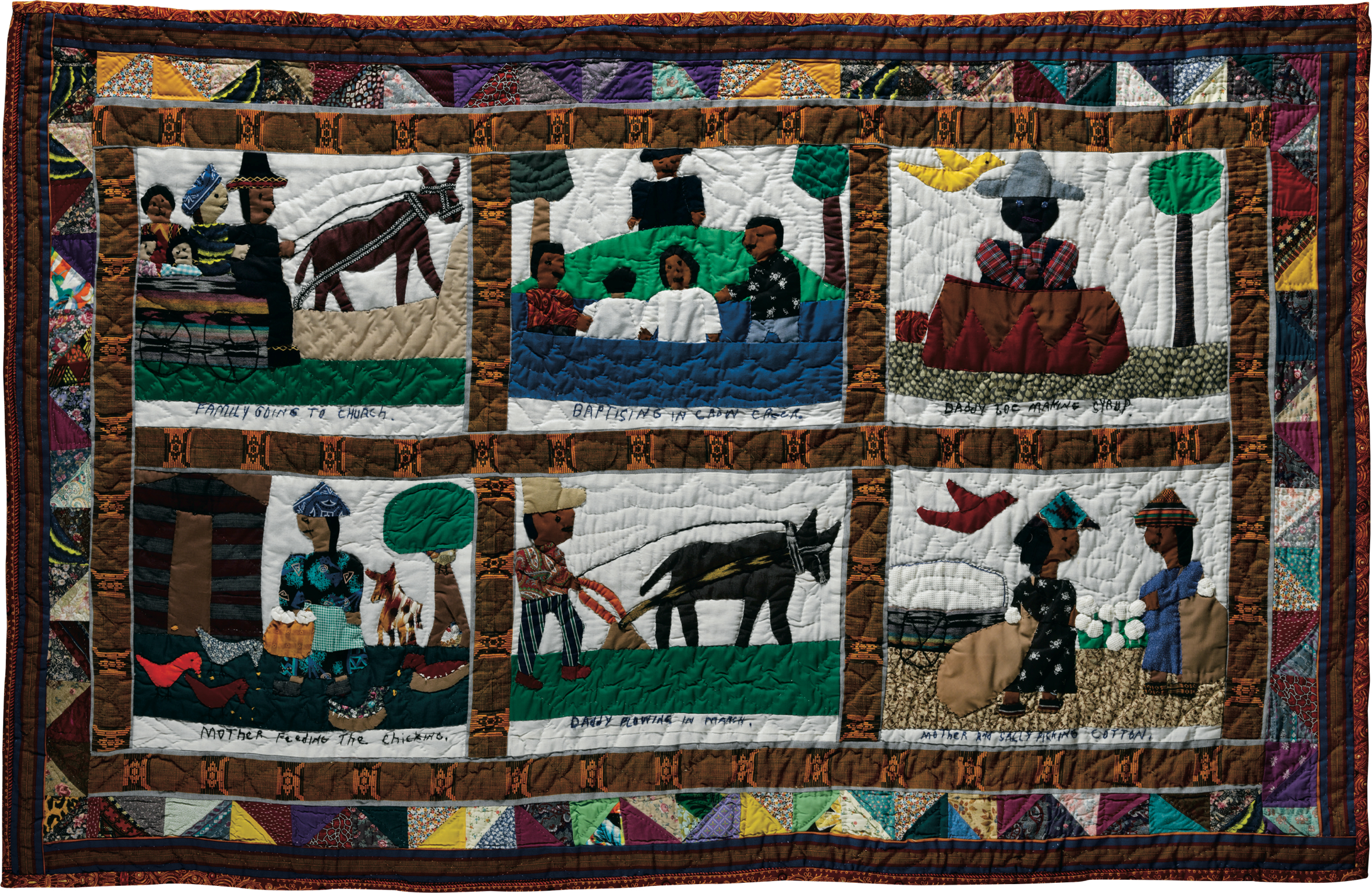
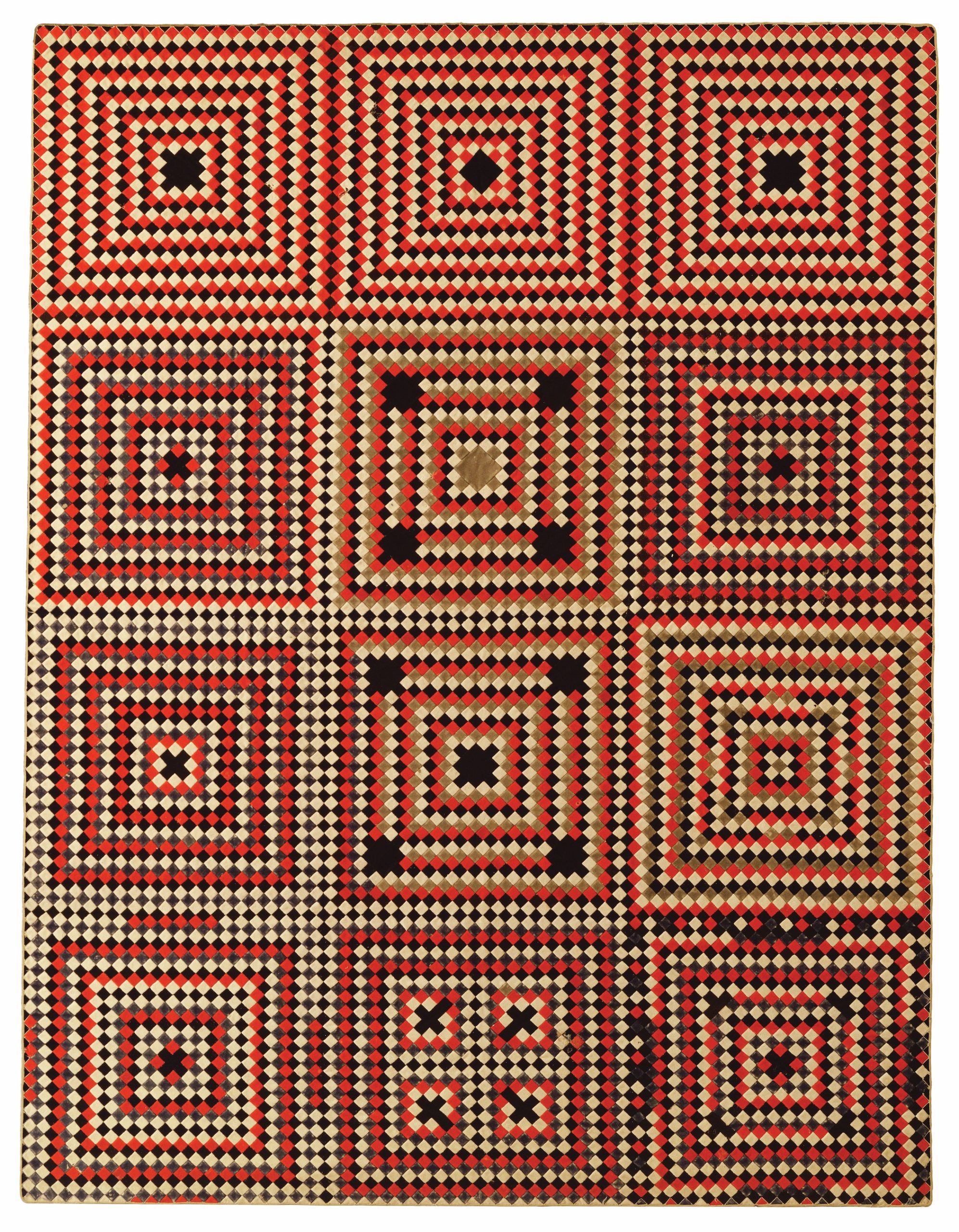
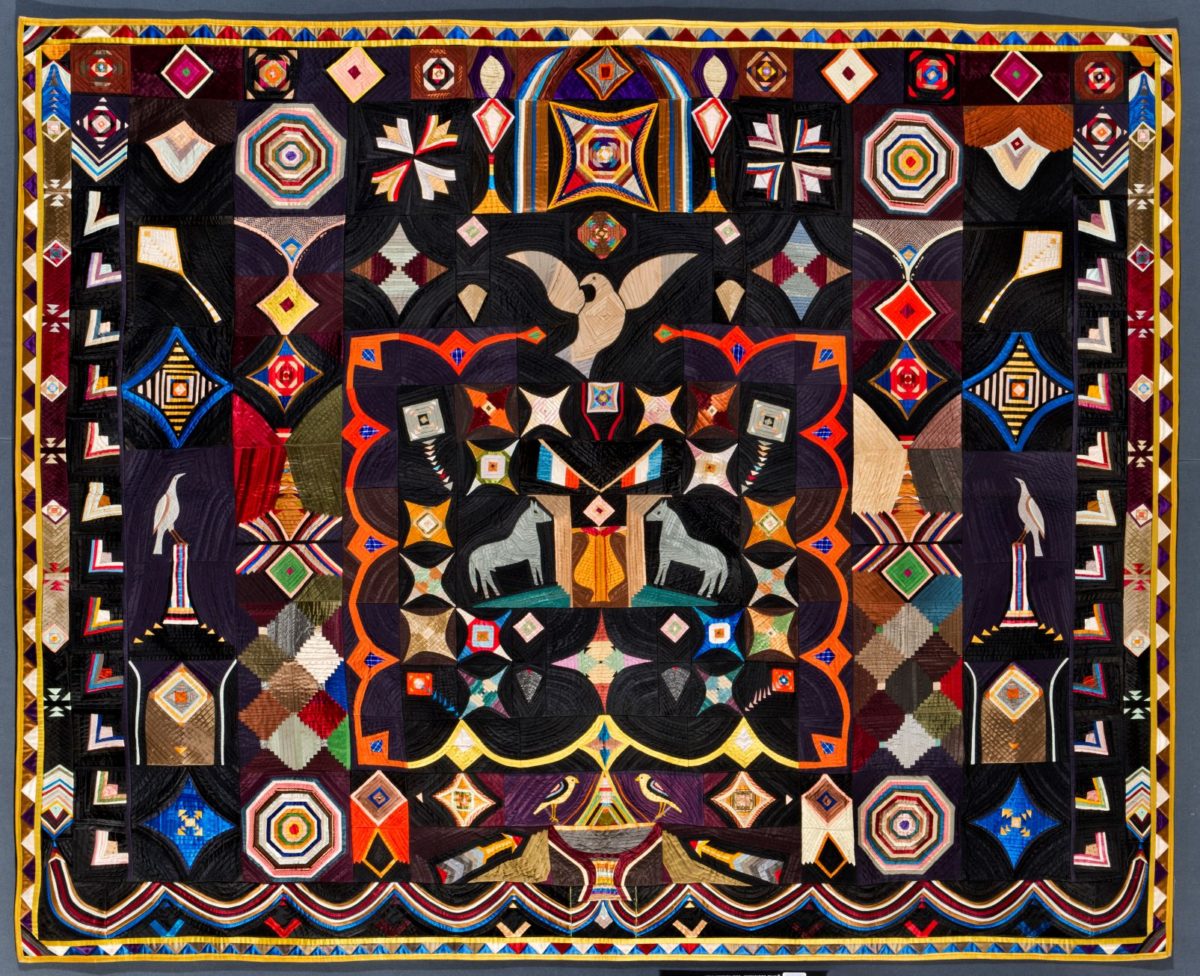
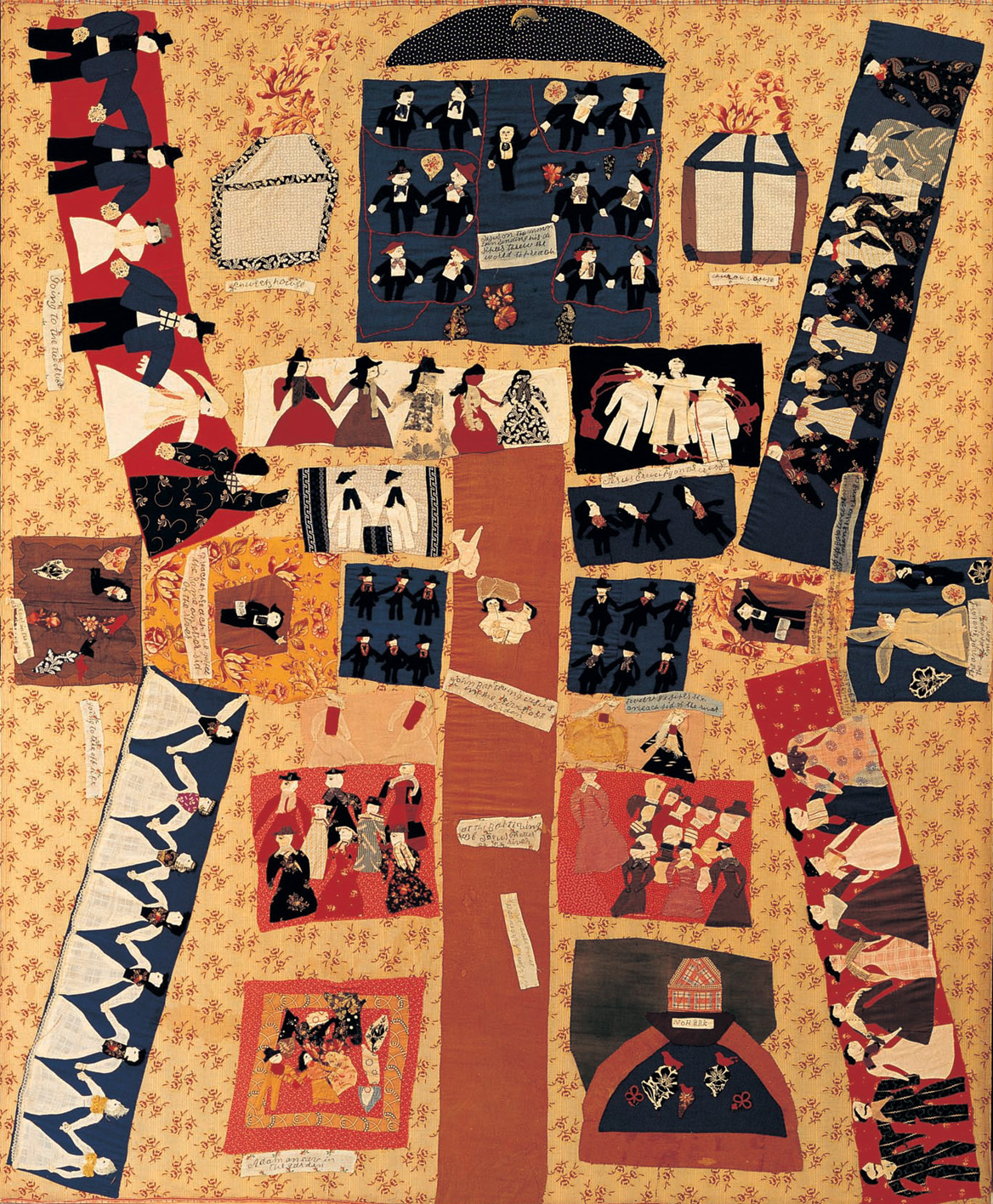
What That Quilt Knows About Me explores the deeply personal and emotional power associated with the experience of making and living with quilts. The exhibition’s title conveys the idea that quilts have the capacity for “knowing” or containing information about the human experience. Reflecting on this sentiment, the exhibition presents quilts as collections of intimate stories.
Spanning from the 19th through 21st centuries, the works on view will reveal a range of poignant and sometimes unexpected biographies. From a pair of enslaved sisters in antebellum Kentucky to a convalescent British soldier during the Crimean War, the exhibition explores stories associated with both the makers and recipients of the works. On a quilt top from the 1890s, we find a surface bursting with narratives; in an example by Hystercine Rankin, a grid of small vignettes depicts scenes of family life defined by faith and toil.
The exhibition also explores how artists have continually drawn inspiration from and pushed the boundaries of quilt-making to incorporate surprising materials and ideas, inviting audiences to consider these objects as archives of personal human experiences. Dindga McCannon’s Mary Lou Williams, a quilt-like work, is created with paint, photographs, and fibers, as a tribute to the jazz musician and cultural environment of Harlem. Jessie Dunahoo uses plastic bags and yarn to evoke quilt-like coverings that swath the interior surfaces of his home.
In conjunction with the exhibition, listen to recordings from the Museum’s Oral History project featuring:
The exhibition is curated by Emelie Gevalt, Curatorial Chair for Collections and Curator of Folk Art at the American Folk Art Museum (AFAM) and Sadé Ayorinde, Warren Family Assistant Curator.
EXHIBITION-RELATED PROGRAMS:
Virtual Insights: Intimate Stories Through Textiles (March 21)
Threads of Knowledge: Sarah Zapata and Julia Bryan-Wilson in Conversation (April 5th)
Threads of Knowledge: The Intricacies of Hawai’ian Textiles (May 17th)
Threads of Knowledge: Dindga McCannon and Aliyah Bonnette in Conversation (June 15th)
Lead support for this exhibition is provided by Fleur Bresler and the Bresler Foundation, with additional support from the American Folk Art Society, Penelope and Ray Bellamy, Citi, the Coby Foundation, the David Davies and Jack Weeden Fund for Exhibitions, the Stacy C. Hollander Fund for Exhibitions, the New York City Department of Cultural Affairs in partnership with the City Council, and the New York State Council on the Arts with the support of Governor Kathy Hochul and the New York State Legislature.
- Hyperallergic

Paula Nadelstern (b. 1951), Kaleidoscope XVI: More is More, New York, United States c. 1996. Cotton and silk, 64 x 64 in. American Folk Art Museum, New York, gift of the artist, 2008.21.1.

Artist Unidentified, Soldier’s Quilt: Square Within a Square, Crimea, India, or United Kingdom, c. 1850–1880. Wool, probably from military uniforms, 85 1/2 x 66 in. American Folk Art Museum, New York, gift of General Foods, 1986.7.1

Hystercine Rankin (1929–2010), Untitled Family History QuiltPort Gibson, Mississippi c. 1990–2000. Cotton with ink, 40 x 62 in. American Folk Art Museum, New York, gift of Evelyn S. Meyer, 2005.10.3.

Carl Klewicke (1835–1913), Original Design Quilt, Corning, New York c. 1907. Pieced silk, faille, taffeta, and satin, 60 x 72 1/2 in. American Folk Art Museum, New York, Museum purchase, 2012.1.1.

Susan Arrowood, “Sacret Bibel” Quilt Top, Possibly West Chester, Pennsylvania, c. 1875–1895. Cotton, silk, wool, and ink, with cotton embroidery 88 1/2 x 72 in. American Folk Art Museum, New York, gift of the Amicus Foundation, Inc., and Evelyn and Leonard Lauder, 1986.20.1

Idabell Bester (1901–c.1992); quilted by Losie Webb Strip Quilt. Emelle, Alabama. Pieced 1980; quilted 1990. Cotton and synthetics, 83 x 71 in. American Folk Art Museum, New York, gift of Helen and Robert Cargo, 1991.19.4
Lead support for this exhibition is provided by Fleur Bresler and the Bresler Foundation, with additional support from the American Folk Art Society, Penelope and Ray Bellamy, Citi, the Coby Foundation, the David Davies and Jack Weeden Fund for Exhibitions, the Stacy C. Hollander Fund for Exhibitions, the New York City Department of Cultural Affairs in partnership with the City Council, and the New York State Council on the Arts with the support of Governor Kathy Hochul and the New York State Legislature.